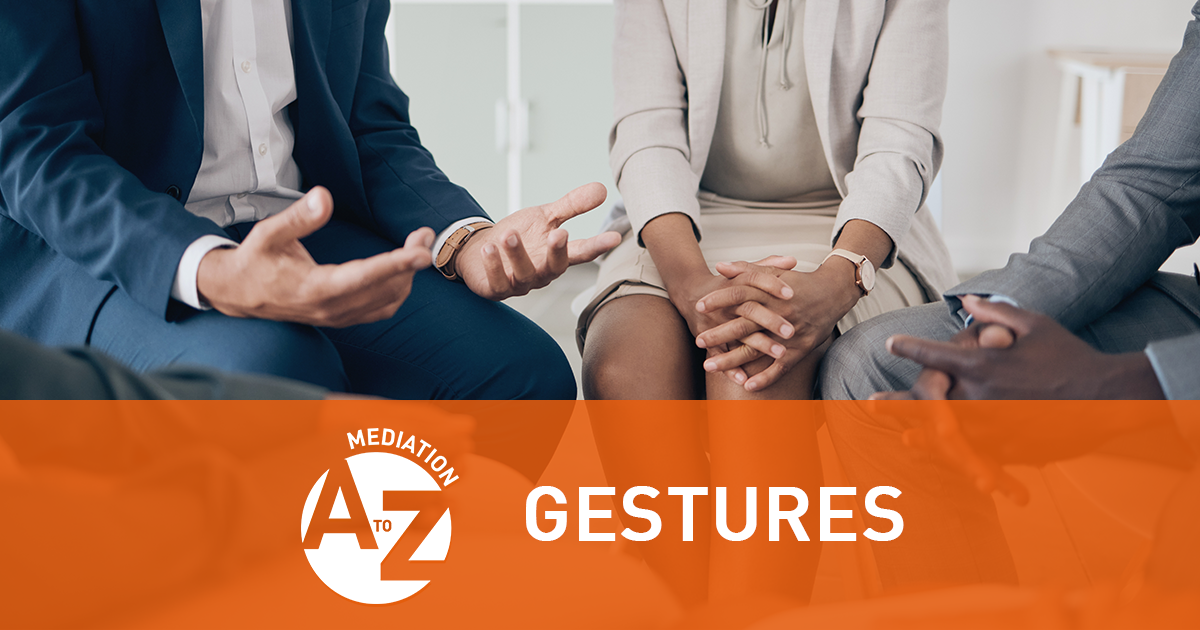
Posted on: May 8th, 2023

So much so, Albert Mehrabian (1972) very famously theorised the “7-38-55 rule”, which broke down how we communicate our feelings and opinions. He stated that 55% of communication is comprised of non-verbal body language, 38% is based on the voice (intonation, pace, etc.), and only 7% consists of actual verbal words.
And, when you consider that the entire premise of mediation is based on good quality communication, it’s clear to see that close attention should be paid to GESTURES and body language.
In fact, in mediation, its often ‘not what you say, but how you say it’. The parties may well be saying one thing to each other – ‘I’m really pleased that your back in the team’ or ‘I don’t have a problem with you parking in front of my house’ – but often their sub-vocal communication or body language tells an entirely different story. Perhaps smiles are being forced, arms might be folded, or eye contact is being totally avoided.
If this is indeed the case, mediators must identify what’s going on and use their skills to draw out the parties’ real intentions – identifying positions and interests – and bring it into the dialogue.
In addition to the parties’ non-verbal communication, the mediator must also be aware of how they are presenting themselves. It reinforces their reliability, empathy, and impartiality, as well as showing that they can be trusted to handle sensitive information and represent everyone’s best interests.
As a result, the mediator needs to give the parties their full attention, maintain an open and positive posture, hold appropriate eye contact, and communicate in a calm and reassuring tone.
This is all something that mediators have become more aware of in the past few years, of course, with more cases being delivered over Zoom or Teams. When the parties and mediator aren’t in the same room, instead choosing to meet virtually, all of the above can become a lot more difficult. Gestures and sub-vocal sounds may not be picked up as well through a camera and microphone, and it is more difficult to get a full picture of each person’s real intentions, thoughts, and feelings.
Regardless of how mediation is delivered, gestures and body language are certainly things that mediators need to be aware of – just as much, if not more so, than the words that are being said.
If you require mediation services, or training as an individual or an organisation, please get in touch with our friendly team today and we'll do all we can to assist you.